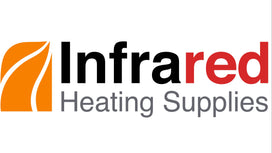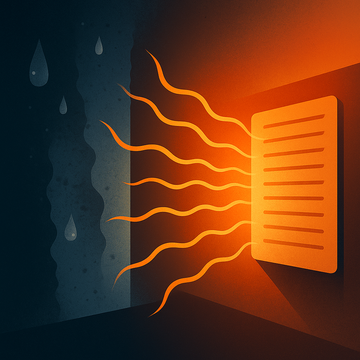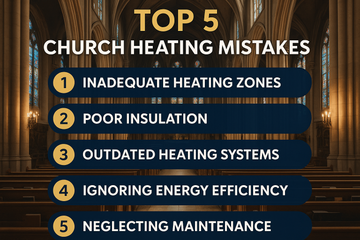How Infrared Heating Helps Meet Green Building Standards
Sustainability in Building: How Infrared Heating Helps Meet Green Building Standards
Sustainability has become a driving force in the construction industry. With the government’s ambitious targets to reduce carbon emissions, property developers, architects, and builders are looking for innovative ways to meet these new environmental standards. Infrared heating offers a solution that can help meet both energy efficiency and sustainability requirements, making it the ideal choice for modern construction projects.
For a direct comparison with low-carbon heating systems, see our infrared vs air source heat pumps guide.
Lower Carbon Footprint
The need for lower carbon emissions is one of the most pressing concerns in the building industry today. Infrared heating systems offer a cleaner, greener alternative to traditional heating solutions. Unlike gas boilers, which emit carbon dioxide and other harmful gases, infrared heaters run on electricity, producing no emissions during operation. By choosing infrared heating, developers can significantly reduce the carbon footprint of their buildings and help tenants lower their energy use.
Energy Efficiency in Every Room
Infrared heating is designed for maximum efficiency. Traditional systems heat the air, causing heat to rise and dissipate, resulting in energy loss. In contrast, infrared heaters directly warm the people and objects in the room, providing faster and more efficient heat distribution. As a result, infrared heating requires less energy to maintain the same level of comfort. This energy-saving feature makes infrared heaters an attractive option for buildings looking to meet energy performance certificates (EPCs) and other green building standards.
Energy efficiency is central to green building design, and you can see the real-world cost impact in how much infrared heating costs to run in the UK.
No Emissions, Just Comfort
Beyond reducing a building's carbon footprint, infrared heaters also improve indoor air quality. Because they don’t rely on convection currents to heat the air, infrared heaters do not circulate dust or allergens, making them a healthier choice for buildings, particularly in environments with sensitive occupants, such as hospitals or schools. The gentle, even heat they provide also means there is no drying out of the air, maintaining optimal humidity levels for comfort.
Smart Heating for Sustainable Control
Many modern infrared heating systems are equipped with smart technology, offering additional control over energy usage. Programmable timers, thermostats, and zoned heating features allow property owners to control heating in different areas of the building according to need. This ability to personalise the heating experience not only provides greater comfort but also leads to further reductions in energy consumption. Whether it’s a commercial office block or a residential development, infrared heaters allow for smart energy management and contribute to sustainable building practices.
Meeting Green Certifications
Infrared heating systems are an excellent way to enhance a building's chances of achieving environmental certifications, such as BREEAM (Building Research Establishment Environmental Assessment Method) or LEED (Leadership in Energy and Environmental Design). These certifications reward projects that implement sustainable and energy-efficient technologies, and infrared heating can help developers meet specific criteria related to energy use and emissions reduction.
Conclusion: A Green Future for Building Projects
As the demand for environmentally-conscious construction continues to rise, the adoption of infrared heating offers a clear path forward for developers, architects, and builders looking to meet green building standards. With its energy efficiency, sustainability, and long-term cost savings, infrared heating is a forward-thinking choice that will help shape the future of construction.
Next steps: choose the right infrared heating
Continue with one of these popular options:
- Shop All Panels, accessories & bundles.
- Wattage Calculator Get the right watts for your room.
- How Infrared Works Benefits, costs & installation.






